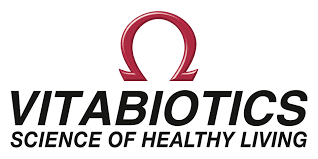What Is A Good AMH Level?


Related products
What’s covered?
The AMH levels give you a hint of ovarian reserve
Have you had any experience visiting female fertility centres? Usually, the first test prescribed by them is the AHM test. What is AMH and how are AMH levels important? What does it measure and what should be the ideal AMH value? Let's summarise these questions.
What is the AMH test?
AMH means anti-Mullerian hormone. This hormone is produced by the granulosa cells present in the ovarian follicles. Its level can give you a hint of ovarian functioning. It is produced in the small follicles (primary follicles) and its levels grow as the follicles grow up to small antral stages where the size of the follicle is around 4mm. So, high AMH values could mean a high antral follicle count. The AMH test is used for ovarian reserve testing.
Almost no AMH is produced by follicles over 8mm in size.
But, since the eggs are always produced during the menstrual cycles, the AMH levels remain relatively stable and this test can be performed on any day of the cycle.
Note: The follicle is the fluid-filled sac in which your eggs grow.
How is AMH measured?
The levels of AMH are measured by the AMH test. Although it can be done in both genders, this test is mostly used to assess the health of the female reproductive system.
No particular training or preparation is required for the test. The lab technician will take a small amount of blood from your veins with the help of a needle. The test will be conducted on the basis of the blood sample and the values of the hormone are measured in ng/ml.
What is the normal AMH value?
Normal AMH values are a product of a number of factors particularly your age, egg count and egg quality. As a female enters the age of sexual maturity, its level begins to rise steadily until a peak is achieved around the age of 25. After this age, the levels begin to fall and will disappear after menopause.
Various normal ranges have been mentioned in various sources. The following ranges are given for reference.
Average normal values: 1.5-4 ng/ml
Low to normal value: 1.0-1.5 ng/mL
Low values: 0.5-1.0 ng/ml
Very low AMH values: less than 0.5 ng/ml
How does it vary with age?
As mentioned earlier, the normal AMH level is a function of age. It naturally declines with the age and reaches a minimum as ovarian reserves decline in the 40s and 50s.
The following reference values are given for the sake of reference. The exact values however will depend upon your own body and other factors. However, you can take these values as a guide.
Age. Average value
25. 3 ng/ml
30. 2.5 ng/ml
35. 1.5 ng/ml
40. 1.0 ng/ml
45. 0.5 ng/ml
Higher values reflect higher ovarian reserves while low values mean a low ovarian reserve (i.e., fewer eggs). But, higher values could signify ovarian diseases e.g., polycystic ovary syndrome or ovarian cancer.
Similarly, very low values could mean the cessation of ovarian functions. The large follicles have regressed and the remaining microscopic follicles decrease in number.
Seek medical assistance in either of the cases. The gynaecologist may recommend follicle-stimulating hormone administration.
For a full range of medications, visit our Welzo Online Pharmacy Page. To find out more about AMH blood tests, click here.
















 Rated Excellent by 26,523+ Reviews
Rated Excellent by 26,523+ Reviews